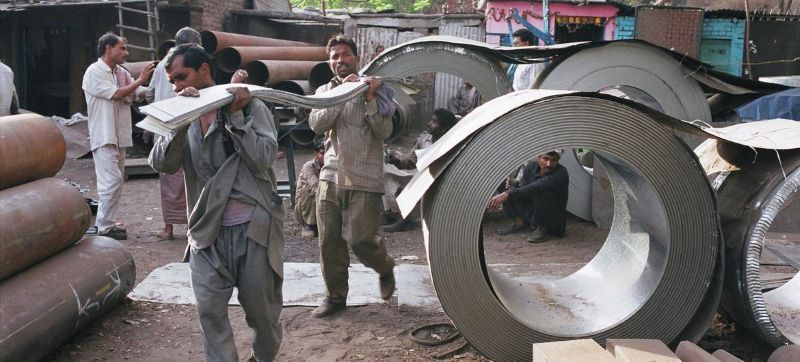 ILO
ILO
Pay packets around the world rose 1.8 per cent in 2023, says ILO
Pay packets around the world rose 1.8 per cent in 2023 and continued their positive trajectory in the first half of the year, rising by 2.7 per cent on the back of a strong post-COVID global recovery, the UN International Labour Organization (ILO) said on Thursday.
“If this trend is confirmed, it will be the largest gain in more than 15 years… however, this positive trend is not shared equally across regions,” said ILO Director-General Gilbert Houngbo.
Speaking in Geneva at the launch of ILO’s Global Wage Report, Houngbo noted that today’s global wage gains reflect a notable recovery compared with the 0.9 per cent decline in 2022, when high inflation – and higher prices - outpaced wage growth.
The trend for bigger pay packets is less marked in highly-industrialized economies, however, where wages “grew modestly” by 0.9 per cent last year, the ILO chief said. This contrasts with a bumper near-six per cent wage increase in emerging economies in 2023 after a 1.8 per cent rise in 2022 – a positive trend that has continued in 2024.
Despite this welcome development, prices remain too high for low-income households who have continued to struggle with the rising cost of living. “Inflation – albeit reduced – remains a harsh reality in many emerging and developing countries,” the UN labour agency chief noted.
Regional trends
From a regional viewpoint, average wages increased faster in Asia and the Pacific, Central and Western Asia, and Eastern Europe, compared to the rest of the world.
In 2022, Africa, Asia and the Pacific, and Central and Western Asia were the only regions that witnessed increases in average wages in 2022, while average real wages decreased in all other regions. Declines ranged from minus 0.8 per cent in Eastern Europe to minus 3.7 per cent in Northern, Southern and Western Europe, ILO said.
In 2023, wage growth was positive in most regions, with the exception of Africa, Northern America, and Northern, Southern and Western Europe.
In 2024 – except for African and Arab States, where average real wages remained stable - wages grew in all regions in 2024, from 17.9 per cent in Central and Western Asia, to 0.3 per cent in Northern America.
Productivity gains conundrum
Amid these gains, ILO pointed out that productivity increased “more rapidly” than wages in high-income countries from 1999–2024 (a 29 per cent output increase compared with a 15 per cent pay packet change). This discrepancy originated mainly between 1999 and 2006, then during the financial crisis of 2008 to 2009 and latterly as a result of the COVID-19 crisis.
According to ILO data crunched from some 150 countries, wage inequality – the difference between the lowest and highest-paid workers – has decreased in two-thirds of countries since the early 2000s, at an average annual rate of between 0.5 and 1.7 per cent.
“The most significant decreases occurred among low-income countries where the average annual decrease ranged from 3.2 to 9.6 per cent in the past two decades,” the UN agency explained.
Conversely, wage inequality has remained stubbornly persistent in wealthier countries, shrinking annually between 0.3 and 1.3 per cent in upper-middle-income-countries and 0.3 to 0.7 per cent in high-income countries. “Decreases were more significant among wage workers at the upper end of the pay scale,” ILO said.
Support Our Journalism
We cannot do without you.. your contribution supports unbiased journalism
IBNS is not driven by any ism- not wokeism, not racism, not skewed secularism, not hyper right-wing or left liberal ideals, nor by any hardline religious beliefs or hyper nationalism. We want to serve you good old objective news, as they are. We do not judge or preach. We let people decide for themselves. We only try to present factual and well-sourced news.







